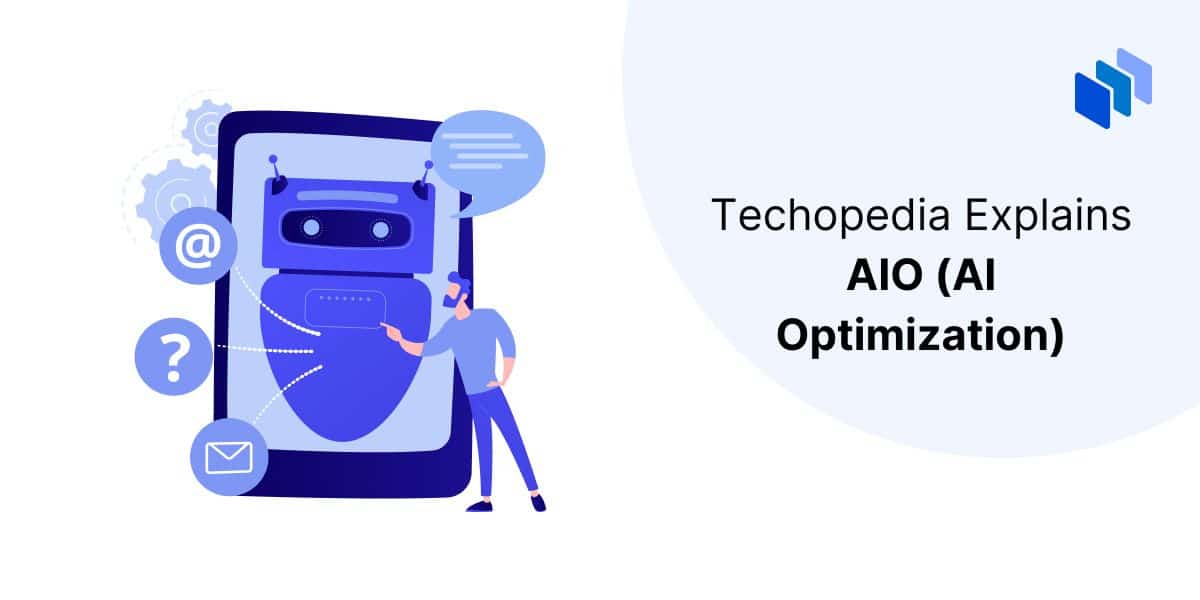What is AIO (AI Optimization)?
AIO (AI optimization) is the use of artificial intelligence (AI) to improve the way something works. The term has both narrow and broad meanings.
The term’s narrow meaning is older and has its roots in data science. In this context, AIO includes techniques and strategies for optimizing a machine learning (ML) model.
The term’s broader meaning is more recent and reflects the growing use of AI in digital transformation. In this context, AIO focuses on figuring out the best way artificial intelligence can be used to automate specific tasks and business processes and allow humans to focus on other things.
AIO and Model Optimization
In the context of model optimization, AIO initiatives seek to improve a model’s accuracy and ability to generalize while reducing latency and computational costs.
AIO Objective
Description
Improve Model Training
Reduce the computational and environmental costs of training a model and the need to retrain models for new tasks.
Improve Model Accuracy
Enhance the model’s ability to make accurate predictions or classifications.
Reduce Latency and Resource Requirements
Minimize the model’s footprint so it can be run on Internet of Things (IoT) edge devices that have limited resources.
Numerous techniques can be employed to optimize machine learning models and the AI systems they support. The specific approach to AIO depends on the type of model, the system’s objectives, and available resources.
Popular Optimization Techniques
- Using specialized hardware, such as GPUs or FPGAs, to accelerate computation-intensive AI tasks.
- Using pre-trained foundation models that can be fine-tuned for different tasks.
- Reducing the size and complexity of a neural network by removing redundant connections.
- Transferring knowledge from a larger, more complex model to a smaller, more efficient model.
- Employing techniques like Huffman coding to reduce the size of model representations.
- Seeking out more efficient learning algorithms and data structures to minimize computational overhead.
- Cleansing, normalizing, and transforming data to improve model training and inference efficiency.
- Changing the model’s architecture to reduce complexity and improve performance.
- Reducing overfitting to ensure the model works well with new data.
- Reducing the precision of model weights to decrease memory consumption and improve inference speed.
- Optimizing model hyperparameters with techniques like grid search to improve performance.
- Employing techniques like early stopping to improve generalization.
- Changing deployment platforms or runtime environments to optimize model performance in production settings.
- Continuously monitoring and analyzing AI model performance to identify and address performance bottlenecks.
AIO and Process Improvement
By definition, a process is a series of steps or actions required to achieve a particular goal. Now that AI technology is becoming less expensive and easier to use, AIO is increasingly being used to optimize the way artificial intelligence is used in healthcare, improve the way AI is used in business, make manufacturing processes safer and more efficient by automating as many processes as possible, and using AI in fintech responsibly and ethically.
AIO Objective
Description
Automate Repetitive Tasks
Use artificial intelligence tools to reduce the need for manual work.
Enhance Analytics
Use AI to analyze data and identify patterns and trends programmatically.
Minimize Human Error
Use artificial intelligence to minimize the chance of human error.
Limit Risk
Use AI to identify and mitigate risks that could impact finance, cybersecurity, healthcare, or personal safety.
As artificial intelligence becomes an integral part of everyday life, AIO strategies and techniques for process improvement are likely to vary widely depending on industry type, data availability, the technology used, an organization’s readiness to adopt and integrate AI into their workflows, and specific use cases.
Popular Use Cases for Leveraging AI in Process Improvement
- Helping organic content to rank higher on search engine results pages (SERPs).
- Automating email campaigns and other types of customer outreach.
- Using AI-powered chatbots and virtual assistants to provide 24/7 customer support.
- Improving supply chain efficiency by predicting customer demand and identifying supply chain disruptions.
- Predicting changing market conditions.
- Automating HR recruitment processes.
- Providing investors with tools that provide data-driven investment insights.
- Predicting maintenance needs for production machinery.
- Personalizing patient care plans by analyzing patient healthcare data and using predictive diagnostics tools.
- Personalizing customer experience with AI recommendation engines.
- Optimizing inventory management and pricing strategies.
- Analyzing data patterns to predict financial risks.
- Monitoring network activity to detect and respond to security threats in real time.






